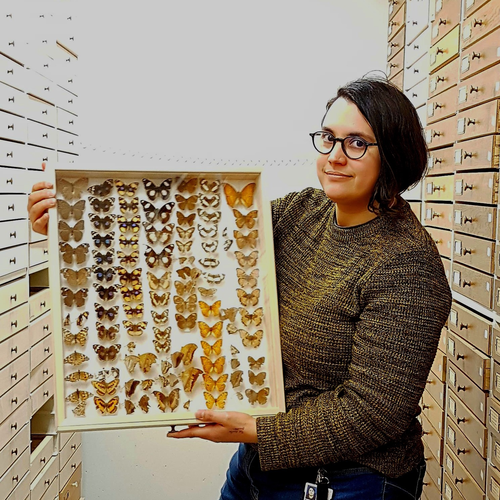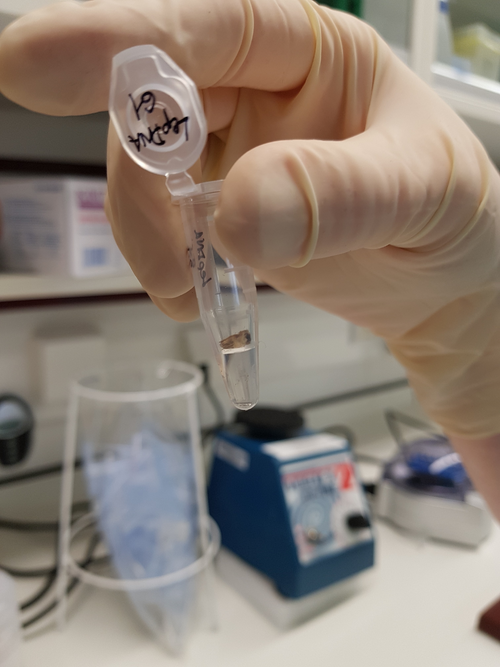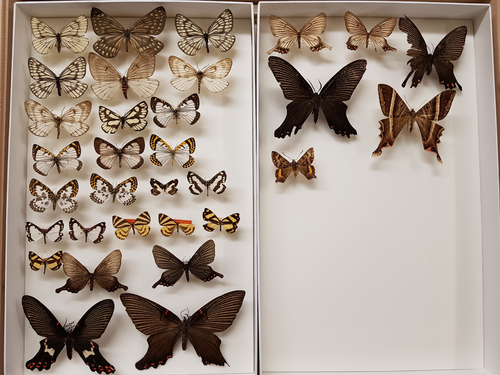This post was written by Elsa Call.
 Natural museum collections around the world are extremely abundant. All of these specimens are highly valuable for a wide range of research applications, such as systematics and taxonomy, biodiversity studies, habitat loss and investigations into the history of infectious diseases or environment contaminants. For a long time, these museum specimens were only used to study morphology because their DNA was seen as too degraded to be used. However, the appearance of the Next-Generation sequencing method allows sequencing of very short fragments of DNA, thereby opening the door to new possibilities, like sequencing of both ancient DNA and museum specimens.
Natural museum collections around the world are extremely abundant. All of these specimens are highly valuable for a wide range of research applications, such as systematics and taxonomy, biodiversity studies, habitat loss and investigations into the history of infectious diseases or environment contaminants. For a long time, these museum specimens were only used to study morphology because their DNA was seen as too degraded to be used. However, the appearance of the Next-Generation sequencing method allows sequencing of very short fragments of DNA, thereby opening the door to new possibilities, like sequencing of both ancient DNA and museum specimens.
Nowadays, we have examples of successful sequencing of extinct taxa (including Neanderthals, mammoths and cave bears), as well as museum specimens with a main focus on mammals and birds, and a few examples of plants. Studies on insects, however, are limited, as they are considered too small and too difficult to extract DNA from.
The main idea of my project is to develop Next-Generation sequencing for museum specimens of Lepidoptera (moths and butterflies), and also to investigate the level of DNA preservation in museum specimens of various ages. The second part of the project is to use these methods to explore the relationships among families of the superfamily of moths, Geometroidea. Within this superfamily, three families are rare and difficult to collect nowadays, but there is an extensive collection of representative species for them in museums (such as Copenhagen, Bonn, Tokyo, Paris, etc.). The idea is to sample as many of the species from these families as we can and to include them in our phylogenomic study.
A funny anecdote that happened in the lab was when the specimens were so dry, they were floating above the DNA extraction liquid. It made us realize we first needed to re-hydrate the samples, before extraction. We soaked them in some drops of water (depending on the specimen size) and let them absorb the water for a while.

Abdomen of one of our samples above the extraction liquid
So far, the protocols (extractions and library preparations) have been optimized for Whole-Genome Sequencing (WGS). Six butterfly specimens from the 40’s have been successfully sequenced with 2 different sequencing machines (MiSeq and HiSeq) and good mitochondrial genome coverage was obtained. Currently, I am processing more samples and more data is yet to come.

Representatives of some of the rare Geometroidea families
I also want to learn an alternative method to Whole-Genome Sequencing, because in terms of evolutionary questions the more taxa, the merrier. Not only because WGS can be expensive for several different species but also because for phylogenomics, we don’t need the whole genome, targeted loci are enough. With this in mind, I learned the Target Enrichment approach. I successfully prepared 32 specimens of 19 different species and targeted 1,900 genes. The samples are currently being sequenced.
BIG4 has brought me a lot, both on a professional and personal level. Thanks to this amazing network I was able to meet very interesting fellow researchers, and I had the possibility to travel for courses, visit other research teams and laboratories, attend congresses and considerably expand my network. I also met wonderful colleagues that are now very good friends of mine! The BIG4 meetings were always cheerful moments, with a lot of fascinating and interesting discussions on our respective projects, future ideas for collaborations and career development.
Publications within the project:
- Mitochondrial Museomics. (In preparation)
- Investigate the relationships of families in the super family Geometroidea based on museum specimens.

